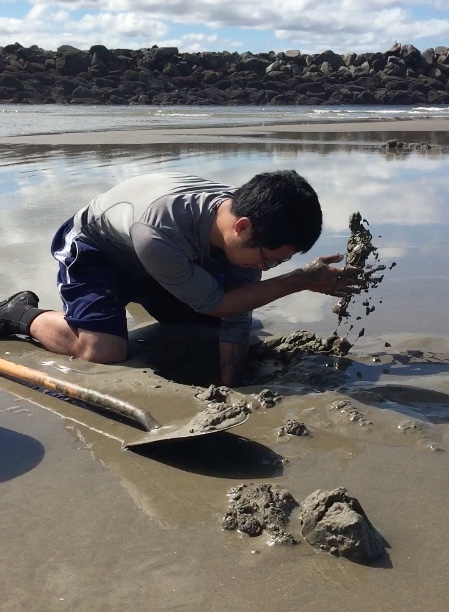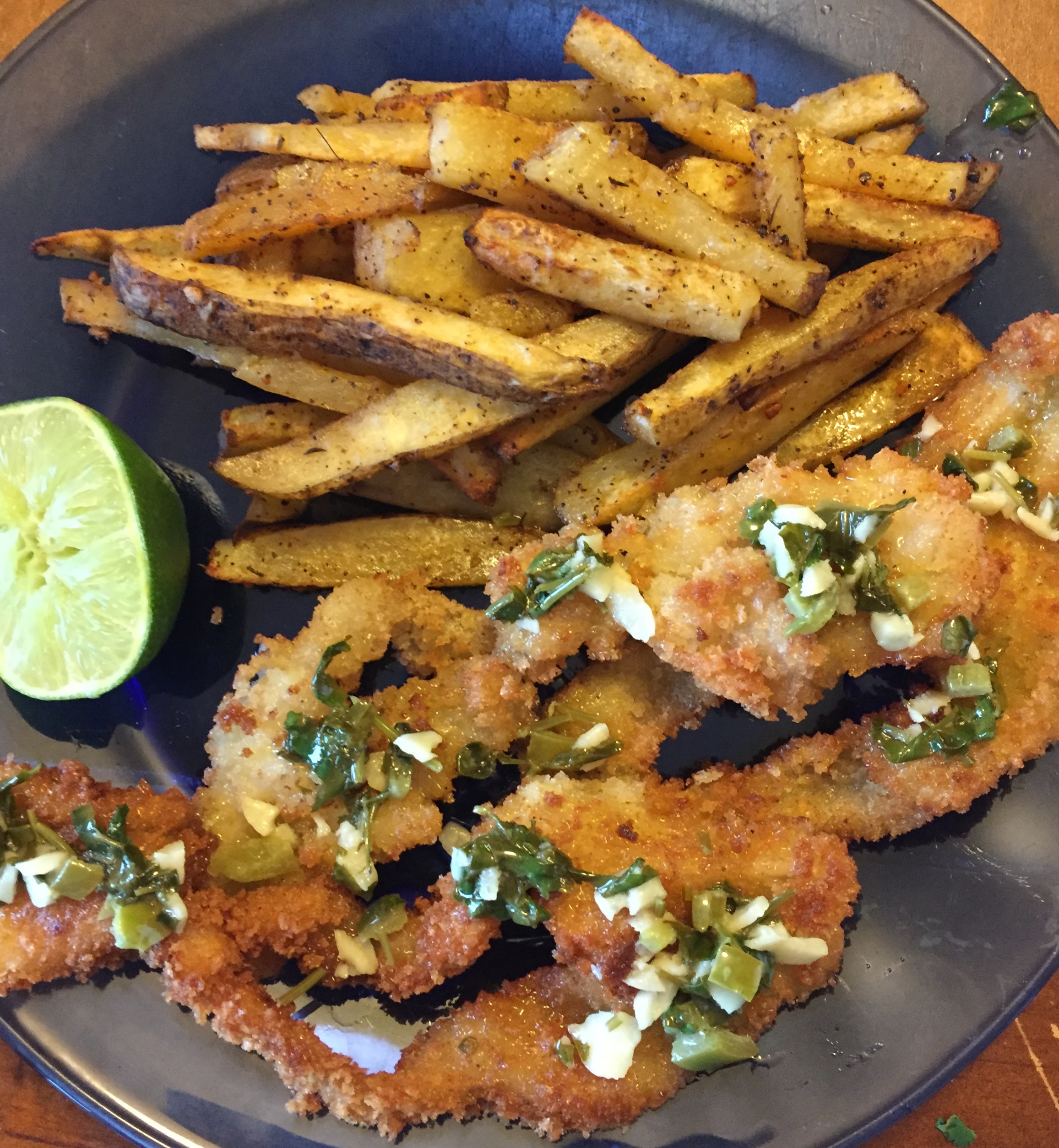Eat local. That’s a phrase we hear fairly often these days, especially with the Locavore movement and all its counterparts. After learning throughout my college years how to be a more conscious consumer of food, I’ve always found it both challenging and exciting to eat locally and seasonally.
Two locals harvest their dinner at North Beach, Newport OR.
Here on the Oregon coast, seafood is what’s in season, but of course there are many challenges to being a conscious consumer of seafood. A large part of this is due to a disconnect between consumers and where their seafood is coming from. So how do you ensure the food you’re eating is local, in season and sustainable? One solution (and a fun one at that) is to harvest for yourself!
My roommate Ed digs for razor clams near the North Jetty in Newport, OR.
I have to admit, one of the most exciting outings so far in Oregon has been right across the bay. As the tide goes out at the beach, there is a whole community of marine organisms living right beneath your feet. Some of them might make a tasty meal if you’re lucky enough and know what to look for. Razor clams are not the easiest clams to pursue if you’re an amateur, but certainly worth the effort.
Pacific Razor Clam.
For those of you who may be unfamiliar with catching a razor clam, it goes a little something like this:
- Step 1: Acquire shovel and bucket
- Step 2: Find a beach where razor clams may live and wait for a minus low tide
- Step 3: Run around stomping your feet and look for a tiny depression to form in the sand around you
- Step 4: Start digging faster than the clam can burrow
Of course that’s not exactly how everyone does it, but it’s sort of a cool excuse to stomp around on the beach and dig holes in the sand just like we all did as a kid. Not to mention, you really have to be sharp with your vision to spot a razor clam (pun intended). A “show,” as they call it, is the little dimple that forms when the clam feels you stomping and starts to dig toward safety. As you can imagine, with an entire community of burrowing organisms (snails, shrimp, crabs, etc) making their own holes and mounds of sand, it can be quite confusing to know what you’re looking for.

Ed digs through a wet slurry of sand and seawater to catch a razor clam.
Once you find a promising show, that’s when the real fun starts. Razor clams can dig fast, and they go deep. These efficient diggers extend their feet downward, while mixing water with sand to make a quicksand mixture that allows them to escape quickly. If you’re an amateur, like my roommate and myself, you may sometimes find dinner slipping away from your fingers after wrestling with a thick slurry of wet sand.
Ed cleans a razor clam to prepare for dinner.
After a morning of chasing razor clams into the sand, Ed and I were able to replace the calories burned digging with a fulfilling meal from local catch. Additionally, I must add that the limit for Pacific Razor Clams is 15 per person per day, but just a few fillets can make a satisfying dinner for one. Catching your limit will definitely help you feed your friends and family, but with sustainability in mind, I might suggest only taking what you need, from different areas of the beach in order to let populations recover. As much fun as it can be to chase razor clams, I think it’s important that we do let some get away, for their sake and for the promise of local, healthy food for generations to come.

A hearty meal of three oven-fried razor clam filets.


I’m really glad I read this after lunch…what a great tutorial!! I like the way you wove ODFW shellfish program rules into your story.
That looks delicious! Glad I actually got to see the photos from this effort after hearing about it from you in person this past week.